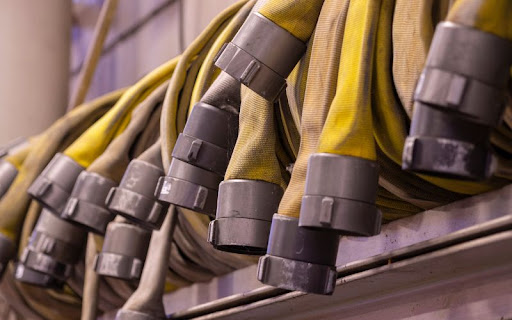
Hose technology has come a long way since the invention of the simple rubber hose. Today, hoses are used in a wide range of industries, from agriculture and construction to automotive and aerospace. Two areas where hose technology is especially important are layflat hoses and automotive hoses. Layflat hoses are a type of flexible hose that are commonly used in irrigation, firefighting, and mining operations. Meanwhile, automotive hoses play a critical role in the operation of modern vehicles, carrying fluids such as fuel, coolant, and hydraulic fluid.
Automotive hose technology has come a long way since the early days of the automobile. Today’s hoses are designed to withstand extreme temperatures and pressures, making them an essential component of modern vehicles. Layflat hoses are also becoming increasingly popular due to their flexibility and ease of use. In this blog post, we’ll take a look at the future of layflat hoses and automotive hose technology, exploring the latest trends and innovations in this exciting field.
The history of layflat hoses and automotive hose technology
The history of hoses dates back to the early days of the automobile. Early hoses were made from leather, which was never wholly satisfactory and was supplanted in the 19th century by natural rubber. Rubber layered on a pole or mandrel produced a flexible and watertight hose; the addition of canvas strengthened the fabric, and helically wound wire gave a degree of rigidity. The introduction of synthetic rubber in the 1930s increased hose life and reduced production costs. Britannica claims that today’s hoses are designed to withstand extreme temperatures and pressures, making them an essential component of modern vehicles.
Layflat hoses are also becoming increasingly popular due to their flexibility and ease of use. They are made from PVC or polyurethane and are reinforced with synthetic fibers. layflat hoses are used in a variety of applications, including irrigation, firefighting, and mining.
The Importance of hose technology in modern industry
Hose technology plays a crucial role in modern industry. Hoses are used to transport a variety of fluids and gases, from water and fuel to chemicals and air. They can also be used to transfer solids, such as sand and grain. The ability to transfer materials efficiently and effectively is essential in a wide range of industries, from agriculture and construction to mining and oil and gas.
One area where hoses are particularly important is in irrigation. Layflat hoses, for example, are used to distribute water to crops in an efficient and uniform manner. These hoses are designed to be flexible and lightweight, making them easy to transport and install. They can also be rolled up and stored when not in use, saving space and reducing clutter in the field.
In firefighting, hoses are critical for delivering water and extinguishing flames. Hoses must be durable and able to withstand high pressures, extreme temperatures, and other harsh conditions. They must also be lightweight and flexible, so that firefighters can quickly and easily maneuver them into position.
In the automotive industry, hoses are essential for the proper functioning of engines and other systems. Hoses are used to transport fuel, coolant, hydraulic fluid, and other fluids throughout a vehicle. They must be able to withstand high pressures, vibrations, and temperature fluctuations, as well as exposure to chemicals and other corrosive substances.
Overall, the importance of hose technology in modern industry cannot be overstated. Hoses are critical components in a wide range of applications, and advancements in hose materials, manufacturing, and sustainability are helping to shape the future of hose technology.
Understanding layflat hoses and their advantages
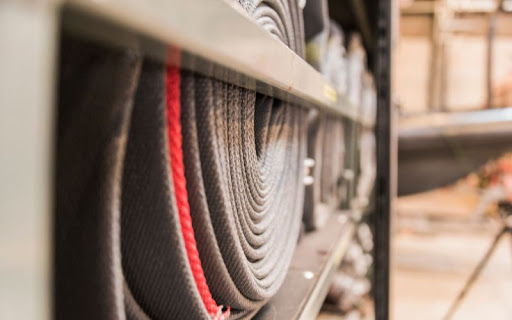
Layflat hoses are a type of flexible hoses that are designed to be rolled flat when not in use. When water or another fluid is pumped through the hose, it expands to its full size and shape. Layflat hoses are commonly used in irrigation, firefighting, and mining operations, as well as in industrial applications.
One of the primary advantages of layflat hoses is their flexibility. They are lightweight and easy to maneuver, making them ideal for use in tight spaces or on uneven terrain. They can also be easily rolled up and stored when not in use, which saves space and reduces clutter.
Another advantage of layflat hoses is their durability. They are made from materials that are resistant to punctures, abrasions, and other types of damage. This means that they can withstand harsh conditions, including exposure to chemicals, UV radiation, and extreme temperatures.
layflat hoses are also designed to have a low friction loss, which means that there is minimal pressure drop as fluids flow through the hose. This results in more efficient fluid transfer, which can help to save time and reduce costs.
In addition, layflat hoses are available in a variety of sizes and lengths, which makes them versatile and adaptable to a wide range of applications. They can be customised to meet the specific needs of a particular industry or operation.
Challenges in automotive hose technology: Current state of the art
Automotive hose technology has come a long way over the years, but there are still some challenges that manufacturers must overcome in order to meet the needs of modern vehicles. One of the main challenges is designing hoses that can withstand the extreme temperatures, pressures, and vibrations that are common in automotive applications.
For example, fuel hoses must be able to withstand exposure to high temperatures and corrosive chemicals, while also being flexible enough to accommodate movement and vibration. Similarly, coolant hoses must be able to handle extreme temperature fluctuations and pressure changes without leaking or cracking.
Another challenge in automotive hose technology is ensuring that hoses are compatible with the fluids they are designed to transport. This is particularly important for hoses that carry fuel or other chemicals, as exposure to incompatible materials can cause the hose to break down or fail prematurely.
To address these challenges, manufacturers are constantly developing new materials and manufacturing techniques. For example, some manufacturers are using advanced synthetic rubber materials that can withstand extreme temperatures and chemical exposure. Others are using new braiding technologies that improve the strength and flexibility of hoses.
In addition, some manufacturers are exploring the use of alternative materials, such as silicone, that offer improved performance and durability compared to traditional rubber materials. They are also experimenting with new hose designs and configurations that can improve fluid flow and reduce pressure drop.
The future of layflat hoses: Key developments and innovations
Layflat hoses have been used for decades in various industries, including irrigation, firefighting, mining, and industrial applications. As technology advances, there are several key developments and innovations that are shaping the future of layflat hoses.
Sustainability
One area of focus is sustainability. Manufacturers are exploring the use of eco-friendly materials in the production of layflat hoses. For example, some manufacturers are using recycled materials to create the hoses, while others are using biodegradable materials that can break down naturally over time. Additionally, some manufacturers are designing hoses that use less water or reduce the amount of water lost during distribution, making the irrigation process more efficient and sustainable.
Development of materials
Another area of innovation in layflat hoses is the development of new materials that improve performance and durability. For example, some manufacturers are experimenting with the use of thermoplastic elastomers (TPE), which offer enhanced flexibility and resistance to abrasion, punctures, and UV exposure. Others are exploring the use of reinforced materials, such as high-strength fibers, to improve the overall strength and durability of the hoses.
Lightweight, compact, and easy to transport and store
In addition, manufacturers are developing layflat hoses that are designed to be even more lightweight, compact, and easy to transport and store. This is particularly important for applications in remote or hard-to-reach areas, where the transportation and storage of large, bulky hoses can be a challenge.
New technologies
Another key development in layflat hoses is the integration of new technologies that enhance their performance and functionality. For example, some hoses are now equipped with sensors and monitoring systems that provide real-time data on fluid flow, pressure, and other key parameters. This allows for more efficient and effective fluid distribution, as well as improved maintenance and troubleshooting.
Overall, the future of layflat hoses looks promising, with continued advancements in materials, sustainability, and technology leading to even more efficient and effective fluid transfer in a variety of industries.
Emerging Trends in Automotive Hose Technology: Materials, Manufacturing, and More
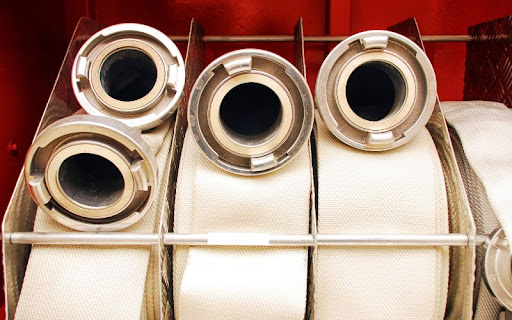
Automotive hose technology is constantly evolving, with new materials, manufacturing techniques, and design innovations emerging to meet the changing needs of the automotive industry. Here are some of the emerging trends in automotive hose technology:
Advanced materials
Manufacturers are exploring the use of new materials, such as thermoplastic elastomers (TPE), fluoropolymers, and silicone, which offer improved performance and durability compared to traditional rubber materials. These materials can withstand extreme temperatures and pressures and are resistant to chemicals, abrasion, and other types of damage.
3D printing
Additive manufacturing, or 3D printing, is being used to produce complex automotive hoses with intricate shapes and configurations. This technology enables manufacturers to create customised hoses that meet the specific needs of a particular vehicle or application.
Smart hoses
Manufacturers are developing smart hoses that incorporate sensors and other advanced technologies to monitor fluid flow, pressure, temperature, and other parameters in real time. This enables more efficient and effective fluid transfer, as well as improved maintenance and troubleshooting.
Integrated assemblies
Instead of producing separate hoses and connectors, manufacturers are increasingly designing integrated assemblies that combine hoses and connectors into a single, streamlined unit. This can improve the performance and durability of the hoses, as well as reduce the overall weight and complexity of the system.
Sustainability
As with layflat hoses, sustainability is a growing concern in automotive hose technology. Manufacturers are exploring the use of eco-friendly materials and manufacturing techniques that reduce waste and energy consumption, and increase the lifespan of the hoses.
Overall, these emerging trends in automotive hose technology are driving innovation and pushing the industry forward, with improved performance, efficiency, and sustainability at the forefront of development efforts.
Sustainability and Hose Technology: Towards a Greener Future
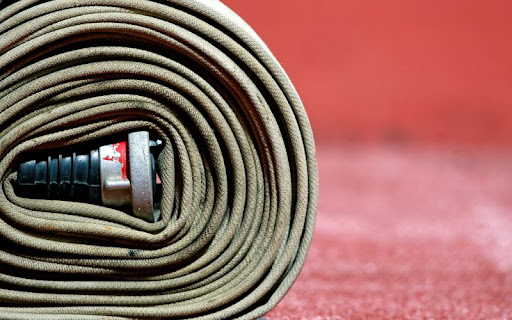
Sustainability is becoming an increasingly important consideration in the development of hose technology, as manufacturers strive to reduce their environmental impact and meet the growing demand for eco-friendly products. Here are some ways that hose technology is contributing to a greener future:
Use of eco-friendly materials
Manufacturers are exploring the use of recycled and biodegradable materials in the production of hoses, as well as materials that are free from harmful chemicals and additives. These materials can help to reduce waste and pollution and improve the overall sustainability of the product.
Efficient fluid transfer
Improving the efficiency of fluid transfer is another key way that hose technology is contributing to sustainability. By reducing fluid loss and minimising energy consumption during the transfer process, manufacturers can help to conserve resources and reduce their carbon footprint.
Durability and lifespan
By designing hoses that are durable and long-lasting, manufacturers can help to reduce waste and promote sustainability. This includes using materials and manufacturing techniques that resist wear and tear, and that are less prone to damage from exposure to chemicals, UV rays, and other environmental factors.
Improved transportation and storage
By making hoses more lightweight, compact, and easy to transport and store, manufacturers can help to reduce the environmental impact of logistics and distribution. This includes designing hoses that can be easily coiled and uncoiled, and that require less space for storage and transportation.
Recycling and reclamation
Finally, manufacturers are exploring ways to recycle and reclaim used hoses and components, reducing the amount of waste that is generated from the production and use of hose technology.
Overall, the future of hose technology is closely linked to sustainability, with manufacturers and consumers alike recognising the importance of reducing environmental impact and promoting a greener, more sustainable future.
Industrial Hose Global Market Report 2023
The industrial hose market is a rapidly growing industry, driven by the increasing demand for hoses in various applications across multiple industries. The global industrial hose market report for 2023 provides a detailed analysis of the market, broken down by type, material type, wire type, pressure, and industry.
By Type
The industrial hose market is segmented into several types, including water, air, chemical, food and beverage, and others. The water segment is expected to dominate the market due to the high demand for hoses in irrigation systems, construction sites, and water treatment plants.
By Material Type
The industrial hose market is segmented by material type, including rubber, PVC, polyurethane, and others. The rubber segment is expected to hold the largest market share due to its durability, flexibility, and resistance to high temperatures and harsh chemicals.
By Wire Type
The industrial hose market is segmented by wire type, including no wire, single wire, double wire, and multiple wire. The multiple-wire segment is expected to grow the fastest due to its high-pressure resistance and durability.
By Pressure
The industrial hose market is segmented by pressure, including low-pressure, medium-pressure, and high-pressure hoses. The high-pressure segment is expected to hold the largest market share due to the increasing demand for high-pressure hoses in industries such as oil and gas, chemical, and construction.
By Industry
The industrial hose market is segmented by industry, including oil and gas, chemicals, food and beverage, pharmaceuticals, water and wastewater, and others. The oil and gas segment is expected to hold the largest market share due to the high demand for hoses in exploration, drilling, and production operations.
Overall, the industrial hose market is expected to grow at a rapid pace due to the increasing demand for hoses in various industries, including oil and gas, chemical, and food and beverage. The market is driven by factors such as technological advancements, increasing investments in infrastructure development, and growing concerns for worker safety and environmental protection.
Global Industrial Hoses Market – Industry Trends and Forecast to 2030
The global industrial hoses market is expected to grow significantly in the coming years, driven by the increasing demand for hoses across a variety of industries. According to a report by Data Bridge Market Research, the market is expected to grow at a compound annual growth rate (CAGR) of 6.4% from 2020 to 2030, reaching a market size of $16.68 billion by 2030.
One of the key drivers of this growth is the increasing need for hoses in the oil and gas industry, where they are used in drilling, exploration, and production operations. In addition, the growing demand for hoses in the chemical, food and beverage, and pharmaceutical industries is also fueling market growth, as these industries require hoses that are resistant to high temperatures, chemicals, and other harsh environments.
Another factor driving market growth is the increasing emphasis on worker safety and environmental protection. This is leading to the development of hoses that are safer, more durable, and more efficient, reducing the risk of accidents and environmental harm.
The market is also being driven by technological advancements, such as the development of hoses made from advanced materials like thermoplastic elastomers (TPEs) and fluoroelastomers (FKMs). These materials offer superior performance and durability compared to traditional materials like rubber and PVC.
Implications and Opportunities for Industry and Society
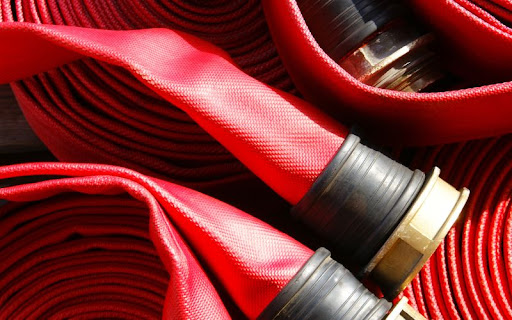
The future of hose technology presents many implications and opportunities for both industry and society. On the one hand, the use of advanced materials and manufacturing techniques is leading to hoses that are more durable, efficient, and eco-friendly. This is helping to reduce waste, improve resource utilisation, and promote sustainability across multiple industries.
On the other hand, the growing demand for hoses in various applications presents opportunities for businesses to expand their product offerings and tap into new markets. This includes developing hoses that are customised to specific industry needs, such as hoses that can withstand extreme temperatures, pressures, and chemical exposure.
Furthermore, the increasing emphasis on worker safety and environmental protection is driving the development of hoses that are safer and more reliable, reducing the risk of accidents and environmental harm. This is particularly important in industries such as oil and gas, chemical, and pharmaceuticals, where the risks of spills, leaks, and other accidents are high.
Based on region, the Asia-Pacific region is expected to dominate the global industrial hoses market due to the high demand for hoses in countries like China, India, and Japan. The region is also home to a large number of manufacturing industries, which are key users of industrial hoses.
All Hose & Valves
The future of hose technology is closely linked to the broader trends of sustainability, safety, and efficiency, with businesses and consumers alike recognising the importance of reducing environmental impact and promoting a greener, more sustainable future. Invest in All Hose & Valves’ advanced and quality products. Give us a call or drop into any of our 3 Queensland locations and we will be glad to assist you.
